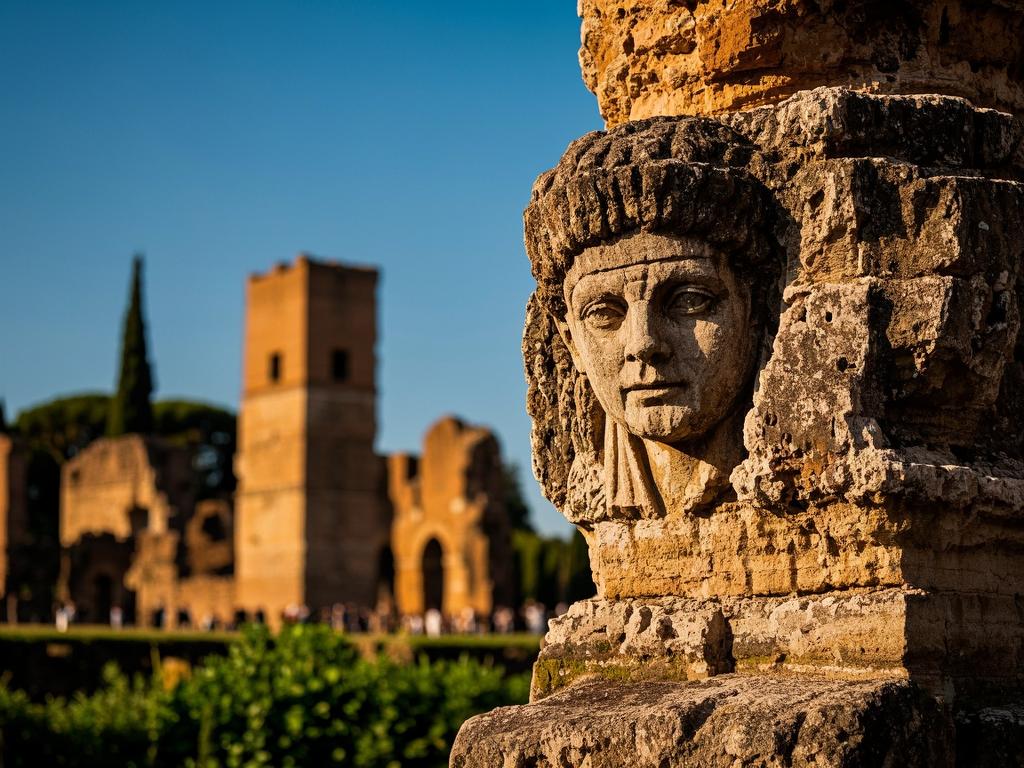
# Exploring the Historical Landmarks of Rome's Baths of Caracalla
Hey there, fellow history buffs and adventure seekers! 👋 Get ready to embark on a journey back in time to the ancient Roman Empire as we explore one of its most magnificent architectural wonders - the Baths of Caracalla. 🏛️
## A Glimpse into the Past The Baths of Caracalla, also known as the Thermae Antoninianae, were built between 212 and 216 AD under the rule of the Roman Emperor Caracalla. This massive complex was not just your average bathhouse; it was a social, cultural, and architectural masterpiece that attracted people from all walks of life. 🤩
## The Architecture Let's start by talking about the sheer size and grandeur of the Baths of Caracalla. Spanning over 13 hectares, this colossal structure could accommodate up to 1,600 people at a time. The main building was divided into several sections, including the frigidarium (cold bath), tepidarium (warm bath), caldarium (hot bath), and natatio (swimming pool). 🌊
But what really sets the Baths of Caracalla apart is its stunning architecture. The complex was designed in the typical Roman style, with high ceilings, arched windows, and intricate mosaics. The central hall, known as the basilica, was a sight to behold, with its massive columns and vaulted ceiling. It was here that people would gather to socialize, exercise, and attend public events. 🎉
## The Social Significance The Baths of Caracalla were much more than just a place to bathe; they were a hub of social activity in ancient Rome. People from all walks of life would come here to relax, socialize, and catch up on the latest news. The complex also had a number of amenities, including libraries, gymnasiums, and even a brothel. 👀
One of the most interesting aspects of the Baths of Caracalla was the way it brought people together. Regardless of their social status or background, everyone was welcome to use the facilities. This sense of inclusivity was a rare thing in ancient Rome, where social hierarchies were often rigid and exclusionary. 🤝
## The Decline and Fall Like many great empires, the Roman Empire eventually began to decline. One of the factors that contributed to this decline was the increasing cost of maintaining large-scale public works projects like the Baths of Caracalla. As the empire's finances began to strain, it became increasingly difficult to keep up with the maintenance and repairs needed to keep the complex in good condition. 💸
Another factor that contributed to the decline of the Baths of Caracalla was the changing social and cultural landscape of ancient Rome. As Christianity began to spread, many people began to question the morality of the baths and the activities that took place there. This led to a decline in the popularity of the complex, and it eventually fell into disrepair. 😔
## The Legacy Despite its decline, the Baths of Caracalla have left a lasting legacy on the world. Today, the ruins of the complex are one of the most popular tourist attractions in Rome, drawing millions of visitors from around the globe each year. 🌍
The Baths of Caracalla also serve as a reminder of the power and influence of the Roman Empire. They are a testament to the empire's engineering prowess, its cultural achievements, and its ability to bring people together. And they continue to inspire and fascinate people today, more than 1,800 years after they were built. 🤩
## So, What Are You Waiting For? If you're a history buff or just looking for a unique and fascinating experience, then a visit to the Baths of Caracalla is a must. Whether you're exploring the ruins, admiring the architecture, or learning about the history and culture of ancient Rome, there's something for everyone at this incredible historical landmark. 🚀
So, what are you waiting for? Book your tickets today and get ready to step back in time to the ancient Roman Empire! 🏛️
#BathsOfCaracalla #RomanEmpire #History #Architecture #Travel

